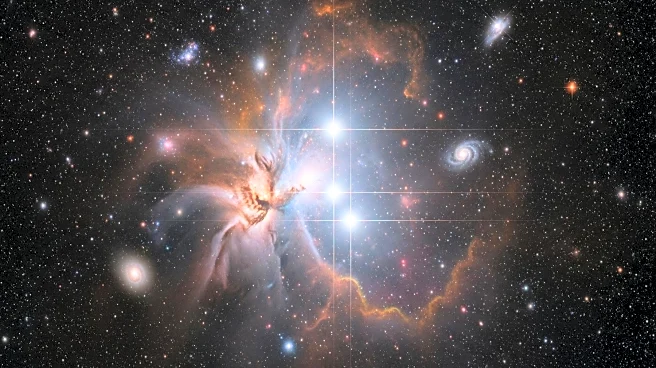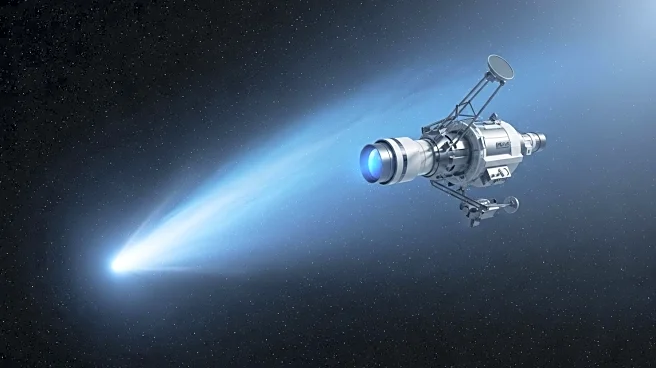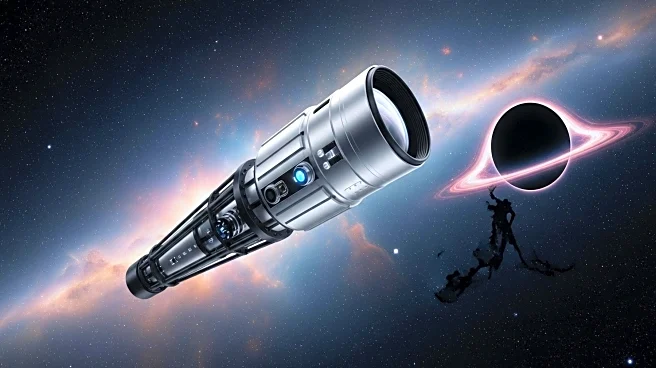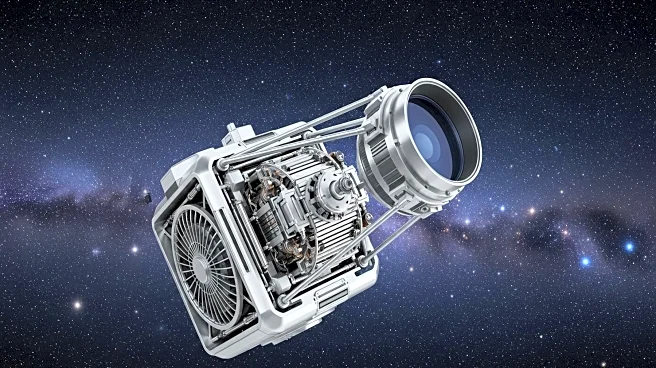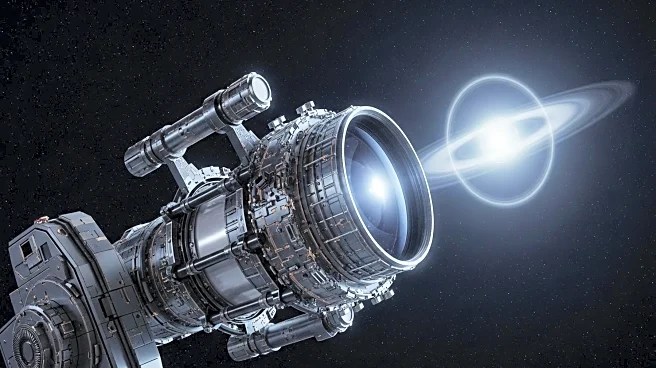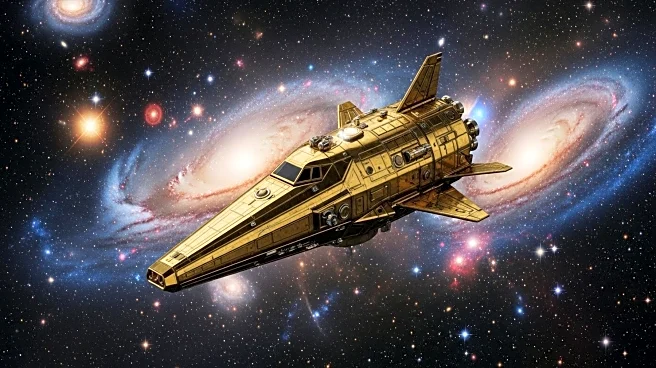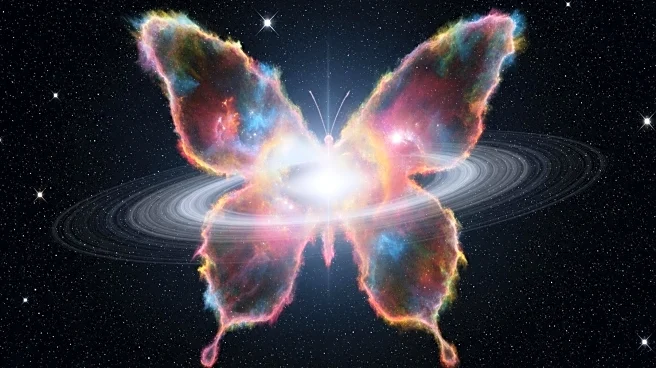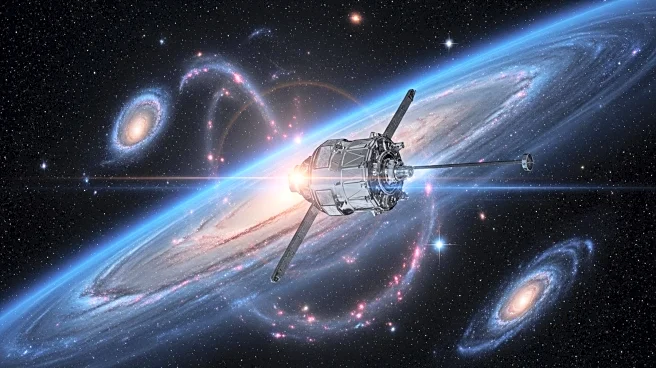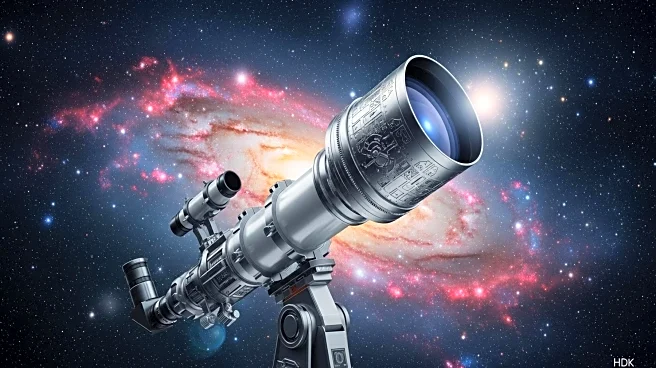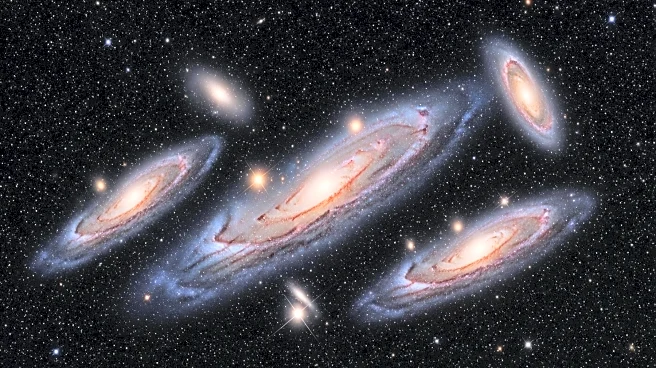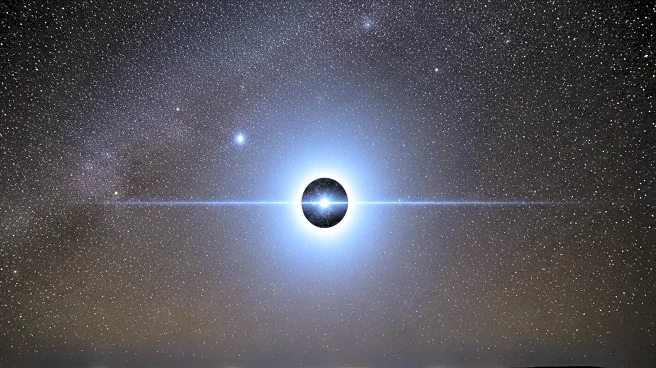What is the story about?
What's Happening?
The James Webb Space Telescope has captured a striking image of a triple star system within the Lobster Nebula, also known as NGC 6357, located approximately 5,500 light-years away in the constellation of Scorpius. The image reveals a portion of the nebula's inner cavity, lined with jagged spikes of molecular gas. These spikes are massive, with the largest measuring 5.4 light-years from tip to base. The nebula is a stellar nursery, home to the Pismis 24 cluster of hot, young stars. Among these, Pismis 24-1, initially thought to be the most massive star known, is actually a triple star system. The stars are massive enough to end their lives in supernova explosions in about a million years. The image, taken with the Near-Infrared Camera, shows stars in false color, indicating their type and the surrounding dust.
Why It's Important?
This image from the James Webb Space Telescope provides valuable insights into star formation and the dynamics within stellar nurseries. Understanding the processes within the Lobster Nebula can help astronomers learn more about the lifecycle of stars and the conditions that lead to their formation. The ability to capture such detailed images of distant cosmic phenomena enhances scientific knowledge and may lead to discoveries about the universe's evolution. The findings could impact theories on star formation and the role of massive stars in shaping their environments, contributing to broader astrophysical research.
What's Next?
The James Webb Space Telescope will continue to explore distant cosmic regions, potentially uncovering more about the formation and evolution of stars and galaxies. Future observations may focus on the lifecycle of stars within the Pismis 24 cluster and the impact of their ultraviolet radiation on surrounding gas. These studies could lead to a deeper understanding of the processes that govern star formation and the eventual fate of massive stars. Continued research may also explore the implications of these findings for the Milky Way and other galaxies.
Beyond the Headlines
The image highlights the intricate interplay between radiation and molecular gas, offering a glimpse into the complex processes that drive star formation. The depiction of stars in false color underscores the importance of infrared technology in revealing details invisible to the human eye. This technological advancement allows scientists to study cosmic phenomena with unprecedented clarity, potentially leading to breakthroughs in understanding the universe's structure and origins.
AI Generated Content
Do you find this article useful?
